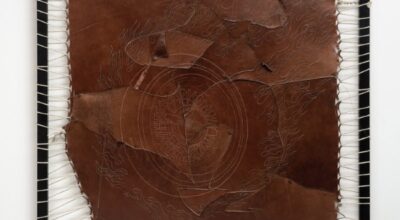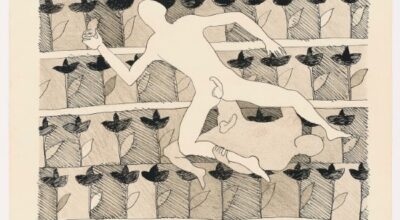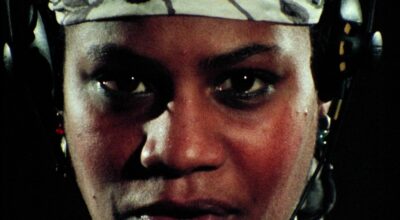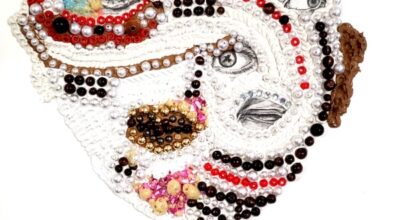New York
MONEY HAS NO SMELL
«Money Has No Smell» brings together recent works by Ignacio Gatica, Mariana Parisca, and GabriellaTorres-Ferrer that trace flows of currency to and from the artists’ places of origin -Chile, Venezuela, and Puerto Rico, respectively-, in the process addressing the complexity of globalized and interdependent financial systems.
ECOLOGIES OF CARE
«Ecologies of Care» showcases a series of new works created during Ani Liu’s postpartum period, in contemplation of the labor of mothering. Reflecting the material culture of infant and childcare, the works shown are created with breast milk, formula, diapers, breast pumps, toys, tracking apps, and screen time.
JOSÉ DE JESÚS RODRÍGUEZ AND ESTEBAN RAMÓN PÉREZ: SOBRE LAS OLAS
What Jose and Esteban show is that this in-betweenness is useful, both aesthetically and elsewhere. It is the place of nepantla—that generative space between here and there, between abstraction and figuration, between the parts and the whole. Their work is all about showing us what should have been clear all along—the ties that bind us, the way that seemingly incongruous things fit together.
KING PLEASURE. UN RETRATO ÍNTIMO DE BASQUIAT
«King Pleasure», la mega exposición inmersiva de la leyenda Jean-Michel Basquiat (Nueva York, 1960-1988), es un blockbuster que ofrece una mirada íntima y detallada de su personalidad desde los ojos de sus hermanas. Por primera vez, la familia Basquiat exhibe su colección para elaborar un retrato fundacional del artista “como nadie más podría hacerlo”.
OPERATIONAL EXCELLENCE
In a moment when cryptocurrency has swiftly become a global phenomenon, this exhibition considers the ways in which dematerialized currency and the ostensible abstraction of value still have tangible impacts. Requiring access to the internet, smart devices, and various software and hardware, the digitization of finance is presented as a seamless, worldwide network, but it in fact has roots in both Wall Street and Silicon Valley.
CELIA VASQUEZ YUI: THE COUNCIL OF THE MOTHER SPIRITS OF THE ANIMALS
Celia Vasquez Yui (Pucallpa, Peru, 1960) creates hand-formed ceramic vessels and zoomorphic sculptures that allude to a spiritual understanding of ecology, according to which a feature of all beings includes a mother spirit. Therefore, the compilation of a bestiary is not just a compendium of endangered species or a cry against their vanishing, but rather an invocation of their spirits, a call for them to come and hold space and perhaps confront the human gaze.
ABRAHAM PALATNIK: SEISMOGRAPH OF COLOR
Nara Roesler presents the first retrospective of Brazilian artist Abraham Palatnik (1928-2020) in New York. Curated by Luis Pérez-Oramas, it presents a selection of works that reveal Palatnik’s fundamental role in Brazilian art in the second half of the twentieth century. It also highlights the relevance and pioneer character of his production in conceptualizing works of visual art as force fields, mediums of energy, and vectors of chromatic dynamism.
ÑANDE RÓGA
On view December 2 – 12, 2021, in the Collection Teaching Gallery at the Center for Curatorial Studies, Bard College, the exhibition combines drawing, textile, and sculptural works with materials from Centurión’s archives, many of which have not been previously published or shown in a public exhibition. These materials provide a multifaceted perspective on Feliciano Centurión’s studio practice, as well as his relationships with other artists and thinkers working in Buenos Aires and Asunción in the 1990s.
BORN IN FLAMES: FEMINIST FUTURES
“Born in Flames” highlights a number of artists referencing non-Western folklore and mythologies to create alternate futures. Their works are representative of how each artist is thinking about futurism––including Afro-, Asian-, Indigenous-, and Latinx-futurism, or something that emerges from those narratives.
HILOS
«Hilos» is a response to the way craft is framed within Western institutions displaying Latin American, Indigenous and Caribbean Art. Historically these works are shown within a “primitive” lens of the past, and disregard the continuous ripples of colonization that have been woven into the fabric of Latinx identity and history.










